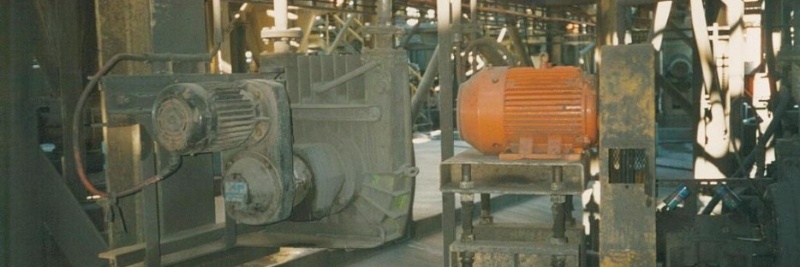If you work with abrasive mixtures like cement, mining tailings, or industrial sludge, understanding what slurry is and how to manage it is crucial. Pumping slurry requires specific equipment, and choosing the right pump is key to avoiding costly downtime.

What is ‘Slurry’?
Slurry is a special kind of fluid that contains solids mixed with a carrier liquid such as water. The mixture is typically thick and abrasive, requiring specially designed pumps to move it effectively.
There are two types of slurry:
- Non-settling slurry: Consists of very fine particles that remain suspended and will not settle to the bottom of the pipe or could settle over a very long period of time (i.e. weeks).
- Settling slurry: Contains larger, coarse particles that settle rapidly and can form blockages if not pumped correctly.
Generally, slurries are:
- Highly abrasive;
- A thick consistency, and;
- Include a high number of solids or particles.
Examples of slurry include mixtures like cement, manure, and mineral processing waste.
What is a Slurry Pump?
A slurry pump is a specially engineered pump designed to handle abrasive, high-density slurries. These pumps are more robust than standard water pumps, with reinforced parts and materials that resist erosion and wear.
So, which pump is used for slurry?
The most common answer is the centrifugal slurry pump. These pumps use a rotating impeller to impart kinetic energy, moving the slurry efficiently through the system. However, not all slurry pumps are the same - slurry pump selection depends on the type of slurry and the specific application.
Slurry Pump Selection: What to Consider
Choosing the right slurry pump starts with understanding the slurry itself and the operational conditions. Consider the following factors:
1. Impeller Design-
-
The impeller should allow solid particles to pass through without clogging.
-
It must be made of wear-resistant materials to handle abrasive slurries.
-
-
-
The casing should offer sufficient clearance to reduce wear and prevent clogging.
-
In high-impact applications, materials like wear-resistant
-
3. Materials of Construction
-
-
Rubber or metal liners are commonly used to reduce erosion.
-
Casing materials vary by industry, for example:
-
-
Rubber casing may be suitable for fine slurries such as sand or cement.
-
Heavy-duty steel casing and impellers are ideal for rock or mineral slurries.
-
-
-
4. Seal and Discharge Configuration
-
-
Proper sealing arrangements prevent leaks under abrasive conditions. Seals include Gland Packing, Expellers or highly efficient Mechanical Seals.
-
Discharge size and direction must suit the slurry's flow and velocity. Slurry pumps can be orientated in 8 different directions.
-
Operational Tips for Pumping Slurry
Even with the right pump, effective slurry handling depends on setup and maintenance. Here are some expert tips:
- Optimise flow rate: Pump slowly enough to reduce wear but quickly enough to prevent solids from settling.
- Reduce impeller speed: Keep it as low as possible to minimise wear on components. Increasing the size of the pump can have HUGE total cost of life savings.
- Use correct piping layout: Follow pump piping best practices to prevent turbulence and blockages.
Ongoing inspection and maintenance are essential to prolong pump life and reduce unplanned downtime.
SlurryPro Pumps: Built for Harsh Conditions
Global Pumps proudly supplies SlurryPro centrifugal pumps, purpose-built for challenging slurry applications. These pumps are widely used in mining, quarrying and processing industries and are valued for:
- Extended wear life
- Superior material construction
- Lower total ownership cost
Pumping slurry can be challenging, but with the right pump, guidance, and maintenance plan, reliable performance is achievable.
At Global Pumps, our SlurryPro pumps range is built to pump highly-abrasive, high-density slurries - particularly in demanding industries like mining and quarrying. These pumps are designed for durability, extended wear-life, and reduced lifetime operating costs..
Get in touch with our expert team to learn more about slurry pump selection or to explore the SlurryPro centrifugal pump range for your application.

